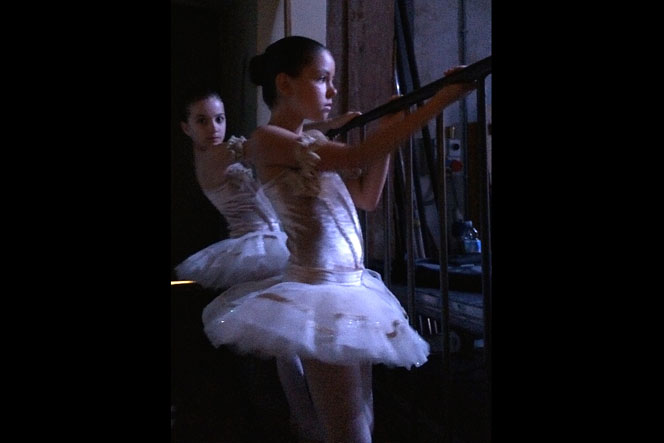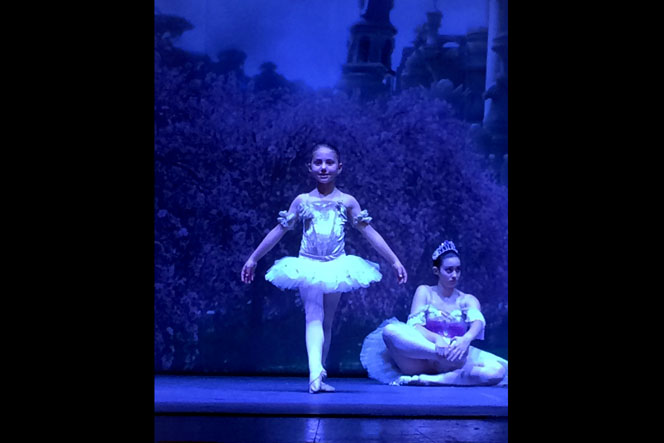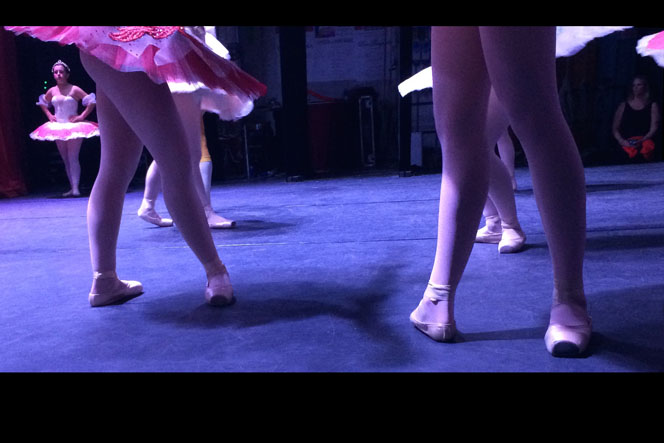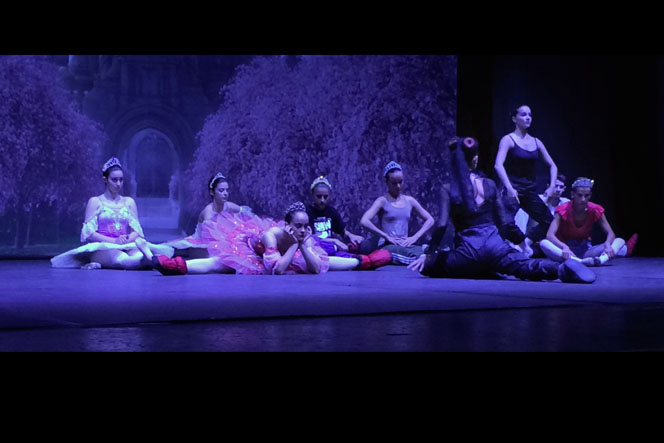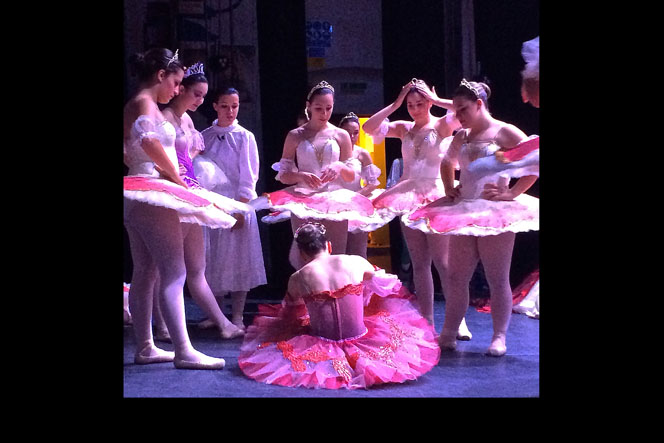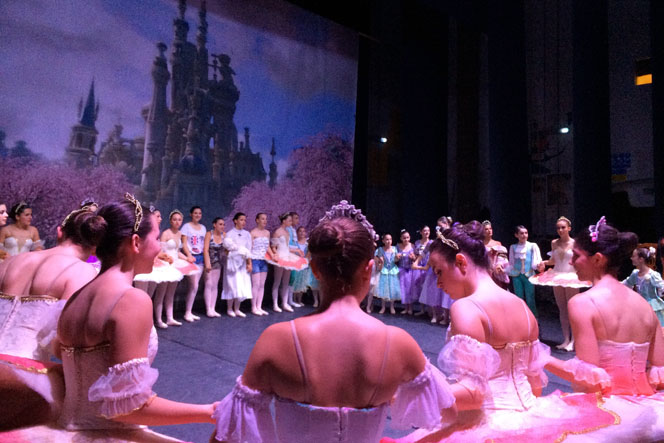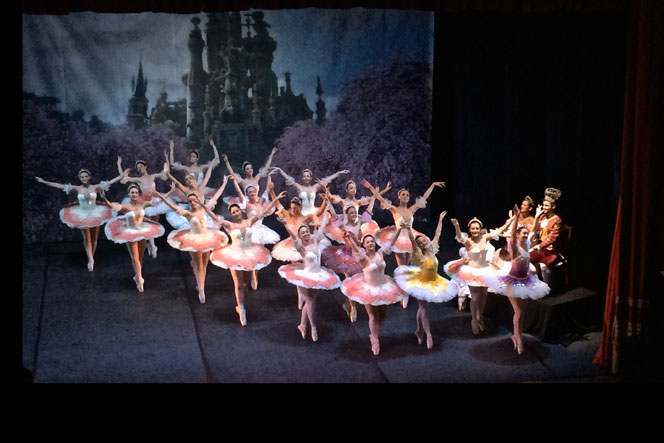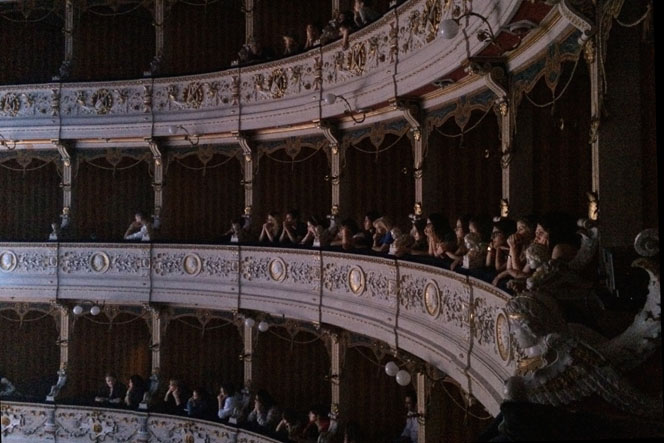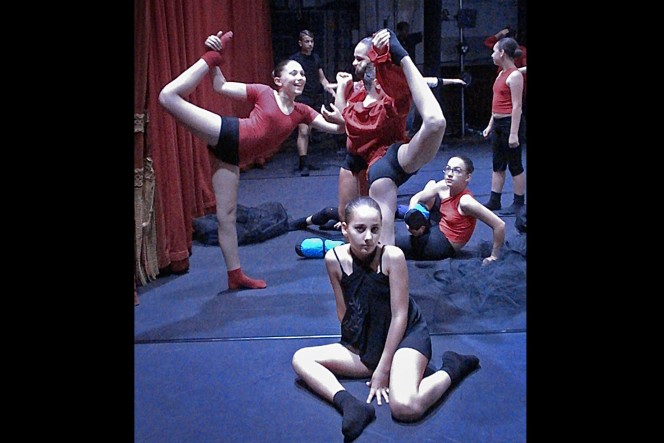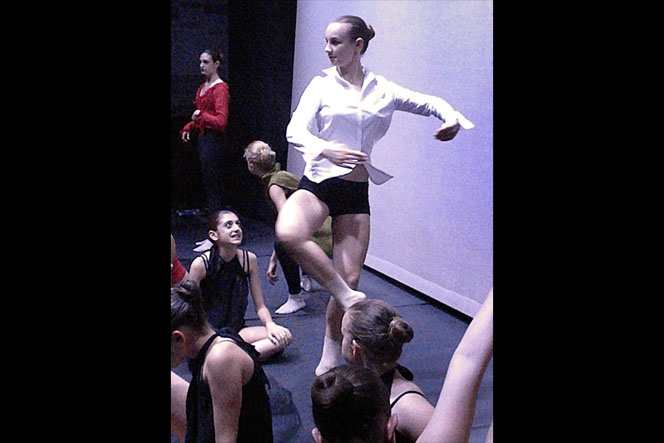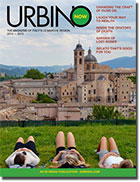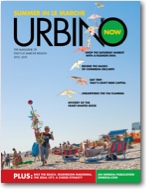Getting the Pointe
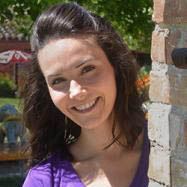
Professionalism is the rule at Italy’s local dance schools
CAGLI, Italy – It’s dance recital night in this small Italian mountain town, an event many American parents might think they can identify with. But the scene unfolding inside the Teatro Communale would probably surprise them.
Unlike a typical recital night in America there are no anxious mothers backstage mussing with tutus and makeup or harassing teachers. There are no relatives and friends cheering like the fans at a sporting event. And there are definitely no students racing across the auditorium yelling and squealing like the gang at a sleepover.
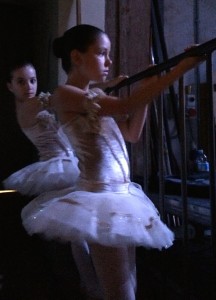
Two young ballerinas in white tutus watch patiently from backstage as the older dancers stretch and warm up for Sleeping Beauty, waiting for their moment to shine.
Instead, the dancers from the school Movimento E Fantasia - Movement and Fantasy – display a professional attitude, which is reflected by the respectful attention of the audience. And this program is one complete story – “The Mirror of the Vampire” – demonstrating the technique dancers learned over the past school year, rather than a series of different numbers as seen at most American recitals.
The entire evening, in fact, leaves the message: This isn’t play, it’s a real performance.
Benilde Martini, the founder of Movimento E Fantasia, made it clear that was no accident. “The arts are the breath of fresh air,” she said. “You breathe and sleep them.”
Like painting and opera, dance has long been an important part of Italian culture, from Renaissance to modern times. And young Italian girls, like their counterparts in the U.S., often dream of gliding gracefully across stages before adoring audiences.
But the differences between the approaches to dance by local schools in the two countries is striking.
American dance classes often are seen as hobbies for energetic young children, a place to get some weekend recreation – and seldom attended by boys. American dance students typically loose interest as they age. While almost 43 percent American children are dancers at one point in their lives, only 21 percent continue their dance education, according to a report by the National Dance Education organization.
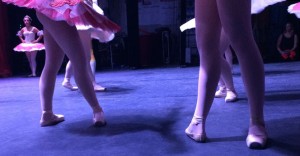
Pointe dancers put a great amount of stress on their feet, sometimes going through a pair of pointe shoes every few weeks during training seasons before big performances.
Italian dance schools take more serious approach. Beginning with the youngest students dancers are allowed to move to higher levels only after being graded on their performance. Because of that, dance classes even for the young are not restricted to weekends; students often take daily classes to improve their technique. And in Italy men are encouraged to study dance.
By the time dancers reach high school, they have experienced several genres and have the option to study at a dance school rather than a typical college prep campus.
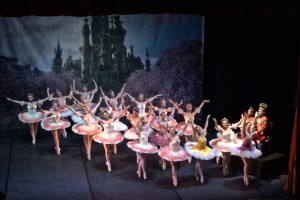
The first act of Sleeping Beauty features senior –level dancers as they are en pointe, raised towards the audience, welcoming the birth of Princess Aurora, as the King and Queen applaud their performance.
Cagli native Valentina Pagliarini, 17, a Movimento student since childhood, has had a typical Italian dance experience: Dance has always come first, which meant missing many activities enjoyed by her high school classmates.
“We have lessons every day, sometimes even Sundays, and you have to have a lot of sacrifices,” she said. “But you do it because when you have passion and that’s all you need.”
Younger student Greta Cagnoli, agreed.
“I like dancing because it makes me have emotion and feeling,” she said. “I want to become a professional dancer,” Cagnoli said.
The audience could feel the emotion as the dancers crossed the stage. An audible gasp from the box seats in the Teatro Communale could be heard when they executed a graceful move or energetic leap.
The applause that followed was enthusiastic, but polite – professional, just like the entire recital evening.



